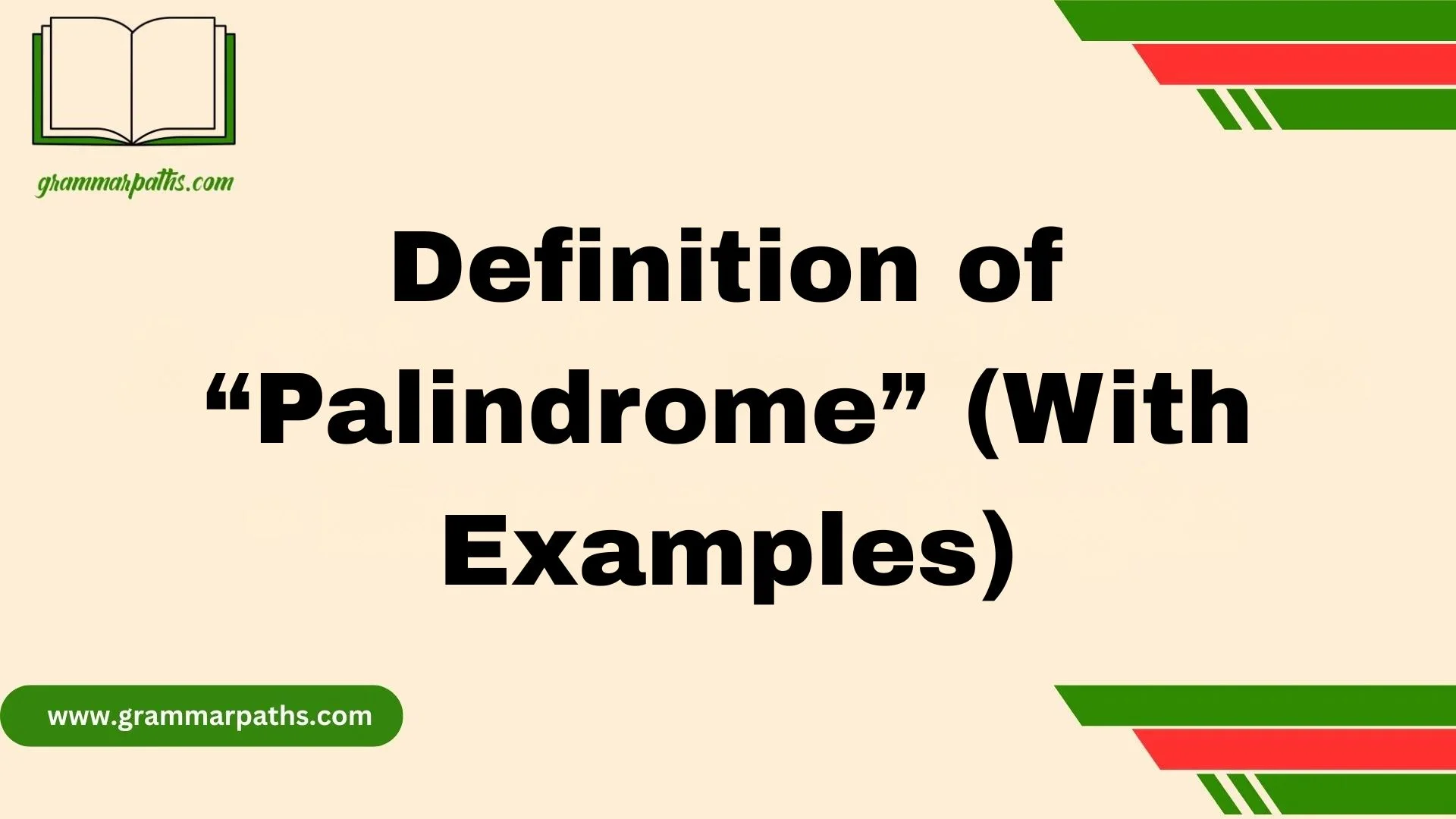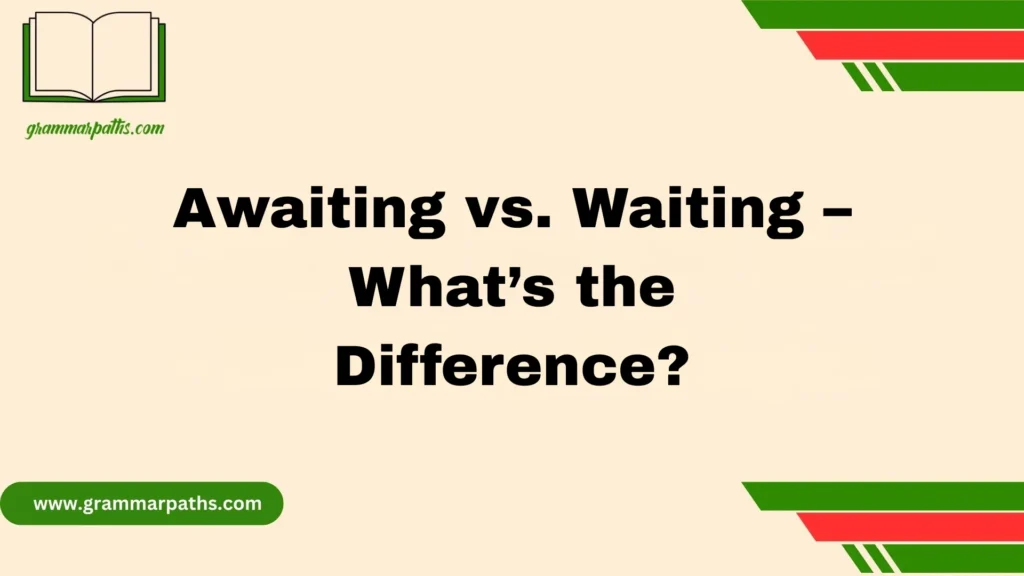I remember the first time I came across a palindrome, and it instantly drew my curiosity. A palindrome is a word, phrase, number, or sequence of characters that you can read the same way backward and forward, ignoring spaces, punctuation, and capitalization. In this Definition of “Palindrome” (With Examples) guide, classic examples like madam, racecar, and level show how common yet unique and captivating they are. Even numbers such as 121 or 1331 have the same property, remaining identical whether read from left, right, or reverse.
In my experience with language studies, puzzles, and games, I’ve seen how linguistic symmetry plays a major role in understanding deeper meaning. Longer phrases like “Madam, I’m Adam” or “A man, plan, canal, Panama” are palindromic even as an entire phrase. I’ve noticed people often use these to impress at parties, while in mathematics, coding, and other activities, they are taught to show symmetry. Famous writers like Ben Jonson helped introduce palindromes to the English language, with Greek roots—palin (“again”) and dromos (“way,” “direction”)—from the early 1600s, also seen in words like hippodrome and velodrome.
Over time, different types emerged, such as word-unit palindromes and one-line palindromes, with well-known ones like radar, stats, eye, Mom, civic, rotor, noon, and the playful phrase “Was it a car or a cat I saw.” These intriguing phenomena are not limited to a single word; they can grow into complex, playful constructions that retain readability in any direction. Personally, I see the world of palindromic wordplay as an endless source of amusement, intrigue, and a delightful twist that captures attention and invites exploration of the language’s quirks.
What Is a Palindrome?
A palindrome is a word, phrase, number, or sequence that reads the same forward and backward, ignoring punctuation, spacing, and capitalization.
- Etymology: The word “palindrome” comes from Greek palin dromos, meaning “again” and “running.” It originally referred to running back.
- Qualities that make a palindrome:
- Perfect symmetry in character order
- Often ignores spacing or punctuation in phrases
- Same capitalization or case-matched
- Perfect symmetry in character order
- Difference from mirrored text: A mirrored text reflects shapes, but a palindrome reads identically in both directions letter‑wise.
This simple symmetry hides deep beauty—whether in a short word like level or a longer phrase like “Never odd or even.”
Common Palindromic Words
English boasts several familiar palindromic words. These are short, frequent, and easy to recognize:
Examples of palindromic words
| Word | Length | Notes |
| level | 5 | Very common |
| radar | 5 | Technology theme |
| civic | 5 | Refers to city |
| racecar | 7 | Car-themed fun |
| madam | 5 | Formal address |
| rotor | 5 | Mechanical term |
Short palindromes like these appear often in conversation and writing. Because they’re simple to spell and pronounce, they feature in literary puzzles and wordplay.
Everyday Examples of Palindromes
Words in everyday use
- Hannah, Bob, Anna, Otto (names often palindromic)
- Mom, dad, and wow (common—in speech and informal writing)
Dates and times
- 11/11/2011 or 02/02/2020 (palindromic date formats)
- Times like 12:21 or 21:12 in 24‑hour clock.
License plates and zip codes
- A US license like ABC‑12321 reads the same backward
- Zip code palindrome: 90209 (Beverly Hills area)
These everyday sightings bring palindromes to life. You see them on signs, calendars, or maybe even your own birth date.
Unusual, Long, and Record‑Breaking Palindromes
When writers push beyond the basics, they come up with long, unusual palindromes:
- Malayalam (language name, 9 letters)
- detartrated (chemistry term, 11 letters)
- tattarrattat (coined by James Joyce, 12 letters)
World record examples:
- A 2014 palindrome published in Guinness World Records reached around 17,000+ letters, created by computer algorithms.
- In English literature, Douglas Hofstadter and logicians have crafted palindromic prose spanning hundreds of words.
These extreme palindromes show how deep and elaborate symmetry can get. They often serve as showcases of linguistic artistry.
Simple Palindromic Phrases
Short phrases often delight readers with meaning and symmetry:
- “Madam I’m Adam”
- “Never odd or even”
- “Was it a car or a cat I saw”
These phrases ignore punctuation and spacing. They carry meaning while hiding symmetry. Authors use them in puzzles, novels, or linguistic games.
Complex and Creative Palindromic Sentences
Tinkerers elevate palindromic phrases into full sentences:
- “A man, a plan, a canal – Panama”
- “Go hang a salami; I’m a lasagna hog”
- “Doc, note, I dissent: a fast never prevents a fatness. I diet on cod”
They illustrate how meaning and structure intertwine. Some authors use diagrams to highlight symmetry:
A M A N A P L A N A C A N A L P A N A M A
A M A N A P L A N A C A N A L P A N A M A
Crafting these requires word-level planning: balancing vocabulary, punctuation, and grammar.
Palindromes in Numbers and Mathematics
Palindromic numbers read the same backward and forward:
- 121, 1331, 12321, 10901
Interesting number‑theory insights:
- Palindromic primes: primes like 131, 727. They remain prime and palindromic.
- Lychrel numbers: numbers that don’t form palindromes via repeated reverse-and-add processes (e.g., 196 in base 10).
- Palindromic patterns appear in base‑10, base‑2, and other positional systems.
Mathematicians study patterns such as how often palindromes appear, or whether every number eventually becomes a palindrome after reversal and addition (still unsolved in some cases).
Palindromes in Biochemistry
In DNA, palindromes refer to base‑pair sequences that read the same on complementary strands:
Example
5’‑GAATTC‑3’
3’‑CTTAAG‑5’
This sequence reads as GAATTC and its complement CTTAAG, symmetrical in double‑helix form.
Restriction enzymes (like EcoRI) recognize such palindromic sites to cut DNA precisely. This property underlies recombinant DNA technology, gene cloning, forensic tools, and more.
Key facts:
- Enzymes usually target 4‑8 base pair palindromic sites
- Palindromes form hairpin and cruciform structures in RNA and DNA
- Mutations in palindromic sequences sometimes cause genomic instability
This shows how palindrome symmetry matters at the molecular level—instead of just in words.
Palindromes in Culture and Entertainment
In US pop culture and media, palindromes pop up in creative titles and puzzles:
- Movie title: “Tenet” (2020), directed by Christopher Nolan, itself a palindrome.
- Music: Songs like “Bob” by “Weird Al” Yankovic riff on palindrome names.
- TV puzzles: “Wheel of Fortune” and newspaper puzzle pages feature palindrome challenges.
US puzzle leagues and word contests frequently include palindrome categories. They appeal because people enjoy symmetry and brainy wordplay.
Fun Facts and Challenges
Here are some intriguing bits about palindromes:
Surprising facts
- The longest English palindrome word recognized by many is tattarrattat from James Joyce.
- In 2016 a computer created a 17,826‑letter palindrome in English.
- Palindromic dates occur only a few times per century in formats like MM/DD/YYYY.
Mini challenges for you
- List five palindromic words you can use today.
- Find a palindrome in your birth date or zip code.
- Write a 10‑word palindromic sentence yourself.
Case study (puzzle competition)
A 2022 US wordplay tournament included a palindrome round. Winner submitted:
“Rise to vote, sir.”
It earned full marks for symmetry and meaning. Judges praised its clarity and elegance.
Conclusion
Palindromes aren’t just clever linguistic tricks—they’re hidden gems of symmetry found across language, mathematics, and even biology. From short words like “level” to complex sentences like “A man, a plan, a canal, Panama,” palindromes fascinate us because they defy the usual flow of writing.
In science, particularly in DNA sequencing, palindromic patterns hold biological importance, helping enzymes cut and replicate genetic material. In culture, they inspire puzzle enthusiasts, movie titles, and music. Even in mathematics, palindromic numbers and primes present intriguing unsolved questions.
Ultimately, palindromes reveal the beauty of balance—proving that words, numbers, and even nature itself can be perfectly mirrored. Whether you’re a writer, a puzzle lover, or a science enthusiast, exploring palindromes sharpens your mind and gives you a fresh way to appreciate symmetry in everyday life.
FAQs About Palindromes
What exactly is a palindrome?
A palindrome is a word, phrase, number, or sequence that reads the same forward and backward, ignoring spaces, punctuation, and capitalization. Examples include “radar,” “civic,” and “madam.”
What is the longest palindrome in English?
The longest single-word palindrome in English is “tattarrattat” (12 letters), coined by James Joyce in Ulysses. The longest computer-generated palindrome sentence contains 17,826 letters, crafted for record-setting purposes.
Can numbers be palindromes?
Yes. A palindromic number like 121 or 12321 reads the same backward and forward. There are also palindromic primes (e.g., 131) and fascinating theories about number reversals creating palindromes.
Are palindromes used in science?
Absolutely. In biochemistry, palindromic DNA sequences are recognized by restriction enzymes, which are essential for genetic engineering, cloning, and medical research.
Why do people love palindromes?
Palindromes intrigue us because of their perfect symmetry and clever construction. They challenge our thinking, inspire puzzles, and often feel satisfying to read or write.
What’s an example of a palindromic phrase?
A classic example is “Never odd or even.” Another is “Madam, I’m Adam.” Both make sense and read the same both ways.
Can I create my own palindrome?
Yes! Start with small, symmetric words like “mom” or “wow,” then try combining them into phrases. Advanced writers create full palindromic sentences or poems with practice.

Emma Brooke is a passionate language expert and contributor at GrammarPaths.com, where she helps learners navigate the complexities of English grammar, idioms, and effective writing. With a strong academic background and years of teaching experience, Emma excels at turning tricky grammar rules into simple, practical lessons that readers can easily grasp.










